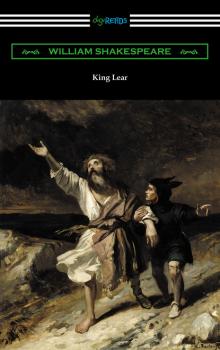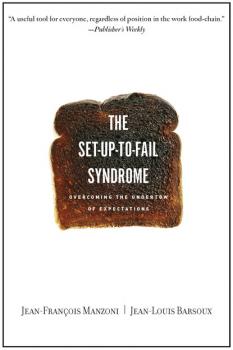MREADZ.COM - много разных книг на любой вкус
Скачивание или чтение онлайн электронных книг.Pride and Prejudice (Illustrated by Charles Edmund Brock with an Introduction by William Dean Howells)
First published in 1813, “Pride and Prejudice” is a story set in the English countryside outside of London during the early 19th century which centers on the life of Elizabeth Bennet, the second of five sisters who are all unmarried. When a wealthy and sociable young gentleman, Charles Bingley, rents the nearby manor of Netherfield Park the opportunity to find husbands presents itself. While attending a ball the Bennets meet Charles Bingley and his friend Fitzwilliam Darcy for the first time. Charles and Jane, Elizabeth’s older sister, form a quick friendship, while Fitzwilliam shows little interest in Elizabeth by refusing to dance with her. Darcy is a wealthy handsome intelligent young gentleman who suffers from a social awkwardness that makes him appear to be overly prideful. In the weeks that follow Elizabeth and Darcy find themselves repeatedly forced into each other’s company allowing Elizabeth to overcome the prejudice of her first impression and open herself up to the idea of a romance between the two. A classic novel of manners, “Pride and Prejudice” is arguably Jane Austen’s most popular novel. This edition includes an introduction by William Dean Howells, forty illustrations by Charles Edmund Brock, and a biographical afterword.
Heidi (Illustrated by Alice Carsey)
First published in Swiss German in 1881, Johanna Spyri’s “Heidi” is the classic children’s story which has delighted readers both young and old ever since its original publication. It is the story of its titular character, Heidi, a girl orphaned at the age of five, who is sent to live with her Grandfather in the Swiss Alps by her Aunt Detie. Her Grandfather has the reputation of having a nasty disposition but Heidi quickly warms up to him. Heidi soon befriends her neighbors and residents of the mountain town, however after three years, Aunt Detie returns to bring Heidi to Frankfurt to be a hired companion to a girl named Clara Sesemann, the daughter of a wealthy family, who is regarded as an invalid. While the two become close friends, Heidi eventually develops an intense case of home sickness for the mountain home of her Grandfather and when the family doctor realizes the stress that she is under it is advised that she return to the mountains before she becomes terribly ill. A charming and uplifting story, “Heidi” is a classic coming of age story which addresses the difficulty in overcoming tragedy and finding one’s place in the world. This edition is illustrated by Alice Carsey.
Common Sense (with a Biographical Introduction by John M. Robertson)
First published on January 10, 1776, Thomas Paine’s “Common Sense” was one the most influential and best-selling works from the colonial period. It has been suggested that it may have been the single biggest factor in inspiring the people of the Thirteen Colonies to declare and fight for their independence from Great Britain beginning in the summer of 1776. One of the central political arguments amongst the colonists of the pre-revolutionary period was whether or not they should indeed seek independence and freedom from British rule. The consequences of speaking out against the British Empire were potentially lethal, and as such, the decision of when, where, and how to do so had to be considered with great care. Given its treasonable content and so as not to distract from the central message of the work, Thomas Paine chose to publish the work anonymously. “Common Sense” provided a straightforward argument in clear, simple language, to the American people as to why they should seek independence, and its importance to the shaping of American history cannot be overstated. This edition includes a biographical introduction by John M. Robertson.
King Lear (Annotated by Henry N. Hudson with an Introduction by Charles Harold Herford)
The historical basis for “King Lear” comes from Geoffrey of Monmouth’s account of the legendary King Leir of the Britons recorded in the historian’s “History of the Kings of Briton.” King Lear is an elderly man and wishes to retire from power. In the decision to divide up his estate he requests that his daughters profess their feelings for him, vowing to give whomever loves him the most the largest share. His two eldest daughters Regan and Goneril go first and based on their responses are rewarded their respective portions. However when it is his youngest daughter Cordelia’s turn, she refuses to flatter her father as her older sisters have done, insisting that there are no words to describe her love. This enrages the King prompting him to disinherit Cordelia and split the remaining inheritance amongst the two eldest sisters instead. As the play progresses, the foolishness of this decision becomes evident, descending the King into madness. In its portrayal of the tragic effect of human weakness and cruelty, “King Lear” has come to be regarded as one of the most powerful of Shakespeare’s works. This edition is annotated by Henry N. Hudson and includes an introduction by Charles Harold Herford.
Ulysses
One of the most important works of the Modernist era, James Joyce’s “Ulysses” was originally published serially in the American journal “The Little Review” from March 1918 to December 1920. Subsequently published as a book in 1922, “Ulysses” chronicles the passage of Leopold Bloom through Dublin during an ordinary day, June 16, 1904. While the novel appears largely unstructured at first glance it is in fact very closely paralleled to Homer’s “Odyssey”, containing eighteen episodes that correspond to various parts of Homer’s work. Errors within the text have resulted in multiple publications of revised editions over the course of the 20th-century. These efforts at revision however are not universally accepted as beneficial with some critics pointing to the original 1922 edition, from which this edition is drawn, as the most accurate of all editions. Filled with experimental forms of prose, stream of consciousness, puns, parodies, and allusions that Joyce himself hoped would “keep the professors busy for centuries arguing over what I meant,” this expansive work is considered one of the great works of English literature and a must read for fans of the Modernist genre.
Five Children and It
While playing in a gravel pit near their new home, five children come across a Psammead, or sand fairy. The sand fairy is compelled to grant the children one wish per day, and since the children ask for such fantastic wishes, they do not turn to stone at sundown as wishes of the past did. Through these wishes, the children have many magical adventures. In this book, the children, Cyril, Anthea, Robert, Jane and the Lamb begin their trilogy of adventures.
Mr Campion's Seance
The truth is stranger than fiction for Albert Campion in this gripping mystery where murder, detective novels and the supernatural collide. 1946, London . The eagerly anticipated new detective novel from Albert Campion's godsibling, bestselling author Evadne Childe, is proving to be another runaway success. Unfortunately, it has also caught the attention of Superintendent Stanislaus Oates for reasons that go beyond its superior plotting. The crime at the heart of The Bottle Party Murder bears a number of striking similarities to a very real, recent and unsolved murder at the Grafton Club in Soho. Evadne wrote the book before the murder occurred, yet predicts it remarkably accurately – is it just a weird coincidence, is Evadne getting her information from 'the other side', or is something more sinister afoot? The repercussions of this extraordinary and complex case will reach out over the next fifteen years, drawing in three of Mr Campion's favourite policemen – Oates, Yeo and Luke – before finally coming to its violent conclusion in 1962.
Changing Minds
Think about the last time you tried to change someone’s mind about something important: a voter’s political beliefs; a customer’s favorite brand; a spouse’s decorating taste. Chances are you weren’t successful in shifting that person’s beliefs in any way. In his book, Changing Minds, Harvard psychologist Howard Gardner explains what happens during the course of changing a mind – and offers ways to influence that process.Remember that we don’t change our minds overnight, it happens in gradual stages that can be powerfully influenced along the way. This book provides insights that can broaden our horizons and shape our lives.
Set-up-to-Fail Syndrome
Do you have an employee whose performance keeps deteriorating—despite your close monitoring? Brace yourself: You may be at fault—by unknowingly triggering the set-up-to-fail syndrome. Perhaps things started off swimmingly. But then something–a missed deadline, a lost client—made you question the person's performance. You began micromanaging him. Suspecting your reduced confidence, he started doubting himself—and stopped giving his best. You viewed his new behavior as additional proof of mediocrity, and tightened the screws further. In The Set-Up-to-Fail Syndrome, Jean-Francois Manzoni and Jean-Louis Barsoux show how this insidious cycle hurts everyone: employees stop volunteering ideas, preventing your organization from getting the most from them; you lose energy to attend to other activities; and your reputation suffers as other employees deem you unfair. Team spirit wilts as targeted performers are alienated. But the set-up-to-fail syndrome doesn't have to happen. The authors provide preventive measures, such as loosening the reins as new employees master their jobs. If the syndrome has already erupted, Manzoni and Barsoux explain how to discuss the dynamic with your employee and reverse the cycle.
Think Twice
No matter your field, industry, or specialty, as a leader you make a series of crucial decisions every single day. And the harsh truth is that the majority of decisions—no matter how good the intentions behind them—are mismanaged, resulting in a huge toll on organizations, the people they employ, and even the people they serve.So why is it so hard to make sound decisions? In Think Twice , now in paperback, Michael Mauboussin argues that we often fall victim to simplified mental routines that prevent us from coping with the complex realities inherent in important judgment calls. Yet these cognitive errors are preventable.In this engaging book, Mauboussin shows us how to recognize and avoid common mental missteps. These include misunderstanding cause-and-effect linkages, not considering enough alternative possibilities in making a decision, and relying too much on experts.Through vivid stories, the author presents memorable rules for avoiding each error and explains how to recognize when you should “think twice”—questioning your reasoning and adopting decision-making strategies that are far more effective, even if they seem counterintuitive. Armed with this awareness, you'll soon begin making sounder judgment calls that benefit (rather than hurt) your organization.









